Our Conservation Partners
MEA continues to raise money and exhibit members' art to helped increase public awareness of our natural environment. Hundreds of people have been inspired and entertained by the art work, and been informed of the ecological issues facing our region.
How can artists help the environment?
The work of artists is to record, visualize and interpret what they see and experience – what inspires them. Their work puts them in an excellent position to illustrate the changes and threats to our natural world in a way that all viewers will understand, and to celebrate the beauty of a harmonious environment.
The members of MEA have each focused their lifework on the natural world, and are ready to devote a lot of energy to helping protect and restore it.
The MEA members work in partnership with environmental groups in a variety of ways to help raise funds for the organizations they support and help stimulate public awareness of the issues that impact us all.
Karen Bowers, Mary‑Ellen Campbell, Maeve Croghan, Eleanor Harvey, John Hewitt, Julie Higgins, Debra Beck Lennox, Deborah Nord, Janis Porter, Paul Reiber, Bob Rhoades
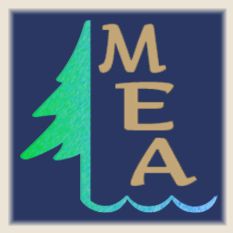
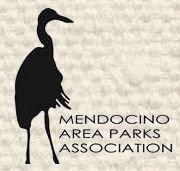 Mendocino Parks (MAPA) is a nonprofit organization formed to benefit the local state parks. MAPA provides educational activities, interpretive programs and informative exhibits in our local parks and promotes the restoration and conservation of park structures. For further information, visit Mendocino Parks’ website.
Mendocino Parks (MAPA) is a nonprofit organization formed to benefit the local state parks. MAPA provides educational activities, interpretive programs and informative exhibits in our local parks and promotes the restoration and conservation of park structures. For further information, visit Mendocino Parks’ website.
MEA’s support is invaluable, and at the perfect time”, said Elizabeth Cameron, Mendocino Parks Executive Director. “All of us have been working extremely hard to keep our state parks open. The funds donated by MEA and others demonstrate to Parks the commitment from our local communities, and that we care.”
Thanks to the creative energy and the generosity of many people, most of the Mendocino parks may be able to retain many of their programs. Mendocino Parks has submitted a proposal to operate Russian Gulch State Park, and is finalizing the proposal to operate Standish-Hickey State Recreation Area in partnership with Team Standish. Mendocino Parks has also committed to paying the utilities for Greenwood museum so that it may remain open has been in contact and conversation with other county groups stepping forward to manage parks in their local areas. Jughandle’s operations have been funded by donations for one year through donations from Alden Olmsted and the California State Parks Foundation (CSPF). Point Cabrillo Light Station has an active support group making great strides toward funding their operation. The Westport Village Society is working hard for their State Beach and headlands. An active Anderson Valley group is hoping to keep Hendy Woods open. A non-profit near Manchester State Beach is studying the potential for that park.
Our local state parks contribute a huge amount directly and indirectly to the economy. The combined revenue the parks contributed to the county in 2009 was over $42,000,000! And keeping the parks open and staffed is vital to their very existence. Without continual maintenance and staff oversight, the parks would be abused, people could be injured, and the actual facilities would rapidly decline. The damage caused when other state parks which were closed cost the state over $100,000 for one park alone.
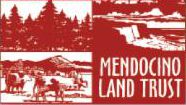 Mendocino Land Trust (MLT) is a non-profit organization formed to conserve important natural resources of Mendocino County, including working farmlands and forests, wildlife habitat, open space, scenic vistas, watersheds, and to facilitate public access. To date their efforts have resulted in the conservation of over 11,000 acres of land in Mendocino County. This includes 7,334 acres of the Big River estuary and surrounding forestland, over 3,500 acres in conservation easements throughout the county, 1,689 acres at Ridgewood Ranch, 75 acres at Caspar Beach and Caspar South Uplands and 55 acres at Navarro Point Preserve.
Mendocino Land Trust (MLT) is a non-profit organization formed to conserve important natural resources of Mendocino County, including working farmlands and forests, wildlife habitat, open space, scenic vistas, watersheds, and to facilitate public access. To date their efforts have resulted in the conservation of over 11,000 acres of land in Mendocino County. This includes 7,334 acres of the Big River estuary and surrounding forestland, over 3,500 acres in conservation easements throughout the county, 1,689 acres at Ridgewood Ranch, 75 acres at Caspar Beach and Caspar South Uplands and 55 acres at Navarro Point Preserve.
The Land Trust is pursuing additional conservation opportunities throughout Mendocino County. Mendocino Eco Artists (MEA) has formed a partnership with the Mendocino Land Trust to help specifically with their efforts to restore the forest and stream habitats of the watershed which feed Big River. This region has been seriously degraded over the past 150 years by logging and milling practices which are, fortunately, no longer used. The health of the forest and watershed is also threatened by illegal activities happening now.
A watershed can be compared to a tree’s roots: the tiniest roots feed into larger and larger roots which eventually bring water and nutrients to the tree growing upward. In the same way, the smallest streams collect water and flow into larger and larger streams which eventually feed into Big River. Big River flows miles down to where its fresh water mixes with the tidal flow of the Pacific Ocean’s salt water to form the Big River Estuary. The estuary is an amazingly rich habitat of plants and animals. Big River has the largest watershed in Mendocino County. stretching inland from a few miles north of Highway 20 and southeast along Comptche Ukiah/Low Gap Road to the Montgomery Forest. The lands in the watershed are owned by Jackson State Forest, the California State Parks Department, many timber companies and private land owners, and the Mendocino Land Trust. All of these owners are stakeholders in the Big River Watershed Coalition (BRWC), the arm of MLT concerned with the restoration and conservation of the entire watershed area.
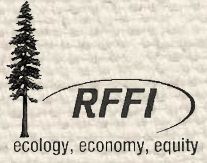 Redwood Forest Foundation, Inc. (RFFI) is pioneering a unique funding strategy for conserving natural resources. The purchase of depleted forest lands is funded by private financing, e.g. Bank of America loan. The sale of a conservation easement and a tract of ancient redwoods to Save the Redwoods League, along with funding from forest revenues and ecosystem services are being used to pay the debt. RFFI is actively pursuing financial support for conserving redwoods as a way to sequester carbon and address climate change. Public funds and private donations are being used to restore the forest and its watersheds.
Redwood Forest Foundation, Inc. (RFFI) is pioneering a unique funding strategy for conserving natural resources. The purchase of depleted forest lands is funded by private financing, e.g. Bank of America loan. The sale of a conservation easement and a tract of ancient redwoods to Save the Redwoods League, along with funding from forest revenues and ecosystem services are being used to pay the debt. RFFI is actively pursuing financial support for conserving redwoods as a way to sequester carbon and address climate change. Public funds and private donations are being used to restore the forest and its watersheds.
RFFI is located in Mendocino County and operates throughout California's redwood region. RFFI is a unique partnership between foresters, industry representatives, environmentalists and community leaders, all focused on improving the future viability of both the forest ecosystem and forest-based communities. It seeks to link all aspects of a community in a way that incorporates economic, ecological and social equity values into all decisions.
Community-based management means that residents with long-term interests define goals and decide how to sustainably manage their forestlands. In order to make this possible, RFFI buys a large tract of forest and puts a conservation easement on it to permanently protect it from development, fragmentation and over-harvesting.
RFFI began in 1997 and was the first non-profit (501(c) 3) organization in the nation created to own and manage industrial timberland for long-term regional, environmental, social and economic benefit. In 2007, the first property purchased was the Usal Redwood Forest, a 50,000 acre tract in Mendocino County. In the seven years since, RFFI has improved roads, restored streams, created fire breaks, conducted salmon spawning surveys, and used Best Management practices to improve habitat, water and soil quality.
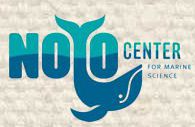 Noyo Center for Marine Science (NCMS) is already a thriving non-profit organization providing exciting educational programs for youth and the public and hands-on opportunities to do the unexpected, like help rearticulate a giant 73 foot long blue whale skeleton and a sea lion. The Center has provided summer science camps for all ages the past two summers. Marine science education will remain the primary focus, but its charter includes the support of education in all natural coastal resources areas.
Noyo Center for Marine Science (NCMS) is already a thriving non-profit organization providing exciting educational programs for youth and the public and hands-on opportunities to do the unexpected, like help rearticulate a giant 73 foot long blue whale skeleton and a sea lion. The Center has provided summer science camps for all ages the past two summers. Marine science education will remain the primary focus, but its charter includes the support of education in all natural coastal resources areas.
But the Noyo Center has a large vision: a three-pronged approach – supporting an innovative research program, creating an integrated education program, and building a world-class facility for research, education and tourism. The Noyo campus, on the former Georgia Pacific lumber mill site, will be a dynamic environment that showcases sustainability while supporting activities that engage the community, the visitor and the scientist in order to inspire connection, communication and creativity.
The Noyo Center’s Mission: To explore our dynamic connection to the ocean. We envision making our dramatic (and previously inaccessible) coastline available for innovative scientific research, hands-on education and natural resource stewardship.
Salmon Restoration Association (SRA) is dedicated to restoring the spawning beds for the native Coho salmon. During the early years of logging on the Mendocino coast, most of the local streams and rivers were scoured smooth and the erosion from the clear-cut hillsides filled the streams with silt and decaying debris. These conditions made reproduction extremely difficult for the Coho ‘tribes’ of the Mendocino coast. As a result, the salmon runs of 20,000–30,000 fish per season per stream are now down to under 1,000 fish each.
If the spawning streams can be restored to something like the original condition with deep pools and shallow rapids, the Coho population has a chance to increase greatly. Restoring habitat will also improve conditions for all the other plants and animals which depend on the stream habitat as well. The fishermen of the coast will once again be able to work in our local waters, and someday, the diners at World’s Largest Salmon Barbeque can, once again eat local salmon! In addition to salmon habitat restoration, the SRA is dedicated to helping educate the public - youths and adults - about the biology of our region. They fund education programs for school groups through the Jughandle Nature Center and they host public forums on marine environmental issues.
Karen Bowers, Mary‑Ellen Campbell, Maeve Croghan, Eleanor Harvey, John Hewitt, Julie Higgins, Debra Beck Lennox, Deborah Nord, Janis Porter, Paul Reiber, Bob Rhoades

